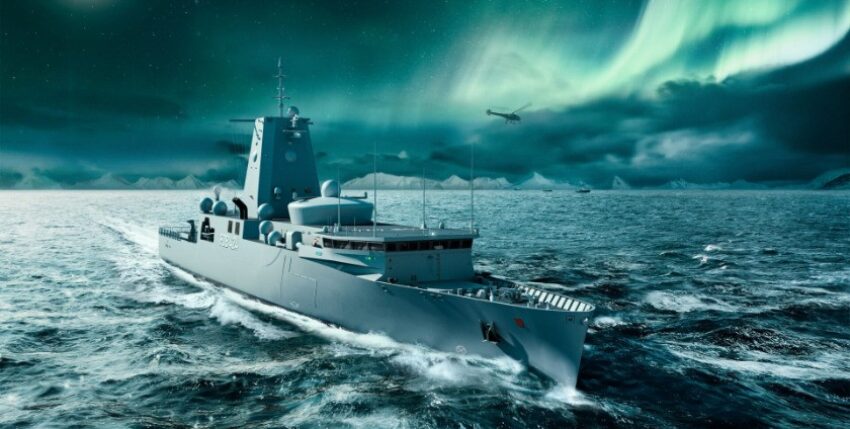The ten armaments projects approved by the Budget and Defence Committee of the German Bundestag on 6 July include three fleet service boats, including a training and reference facility. On 10 July 2023, the amendment contract was then signed between the President of the Federal Office of Bundeswehr Equipment, Information Technology and In-Service Support (BAAINBw), Annette Lehnigk-Emden, and Tim Wagner, CEO of the NVL Group, which is acting as the contractor.
Planning history
Back in June 2021, the contract for the procurement of three Class 424 fleet service boats with a reconnaissance training and reference system was signed between the BAAINBw and NVL B.V. & Co. KG, at that time still Fr. Lürssen Werft GmbH & Co. KG, was concluded. With parliamentary approval on 6 July, the project moved from the design phase to the realisation phase. The total contract now has a volume of up to 3.26 billion euros and will be financed from the defence budget.
Fleet service boats
German Navy fleet service boats are specialised units for monitoring sea and coastal areas with electronic, hydro-acoustic and electro-optical sensors (reconnaissance). The new boats, with a length of around 132 metres and a displacement of between 3,500 and 4,000 tonnes, are to replace the existing class 423 fleet service boats. The crew of the boats will be 50 people, and the reconnaissance crew to be embarked will also be around 50 people. Delivery of the Class 424 is scheduled to take place between 2029 and 2031 - the training facility will be available to the navy as early as 2027.
New approach to a naval armaments programme
The armament programme for the three new reconnaissance units has recently been accompanied by irritation. Research by SZ, WDR and NDR caused a stir, according to which the procurement would be 1.2 billion euros more expensive, because according to the 2023 federal budget, EPl 14, only just under 2 billion euros had been earmarked for the fleet service boats.
The following background must be taken into account in the current re-evaluation of defence procurement procedures: The procedure used in the past for a constructive performance specification gave the contractor specific instructions on how and what was to be built - resulting defects and errors were to the detriment of the client. As a result, a number of change requests became necessary during the construction phase and had to be incorporated into the ongoing process, which repeatedly led to construction delays and oversized cost increases that were rightly criticised by the public.
In order to avoid this problem in the future, the functional specifications of the first contract contained specific requirements for the scope of services of the boats, but left the concrete implementation of the technical solutions to the contractor. In this case, there were several development loops (design loops) involving both the contractor (general contractor) and the trades involved (subcontractors) as well as the client, at the end of which the current construction specification was created. With this iterative definition of the requirements for the fleet service boat system, the contractor is not given any specifications for implementation. In the end, the company decides how the design is to be realised. Any errors in the design are then at the company's expense.
More logical approach
Within the chosen, more cooperative approach, the BMVg decided to deviate from a pure design-to-budget approach in view of the events from February/March 2022 and to emphasise the core mission of the units, i.e. reconnaissance, more strongly and to incorporate newly acquired knowledge into the specifications. Elements such as technical requirements for signal acquisition, antenna design, sustainability including medical supplies, the use of unmanned systems, self-protection and data transmission were reassessed. The functional description approach was accepted during the first parliamentary debate in summer 2021. The Budget Committee linked its approval to a so-called conditional decision, which included a budget cap of just over 2 billion euros (price level 12/2020) and the deadline for finalising the construction specification. This conditional resolution would have allowed the contract to be signed without prior parliamentary scrutiny.

Parliamentary control
In contrast, the BMVg decided to revisit the issue in the Bundestag. The decisive factor here was not only newly introduced operational requirements, but above all the price development of the FD boat class 424 armaments project. Between June 2021 and the end of 2022 alone, the increases in the individual indices (raw materials, energy, industrial products) accumulated to an officially confirmed 25 per cent - an increase of a good three quarters of a billion euros (Federal Statistical Office).
New defence procurement procedures
In this respect, the joint design development is in line with the ideas for improvement that have long been expressed in the procurement process. Perhaps now, and especially in this case, it will finally be possible to keep to the time and cost framework of a defence project. However, this will only be proven during realisation.











One Response
In view of the future reconnaissance capabilities of modern warships, it will be completely superfluous to build so-called reconnaissance boats on the scale of frigates. In future, battleships will only survive in naval combat if they can react extremely quickly to situations in combat against air forces, guided missiles and underwater combat units, or can act through their own reconnaissance. This means that the fleet service boat programme should be cancelled and the funds required for this should be used to provide our frigates and corvettes with more modern reconnaissance equipment. These funds could also be used to accelerate the planned construction of the MKS 180, as these units are already lacking today.
It would also make sense to use the funds to expand the U-212 CD project to four units. My advice as a former submarine officer.